
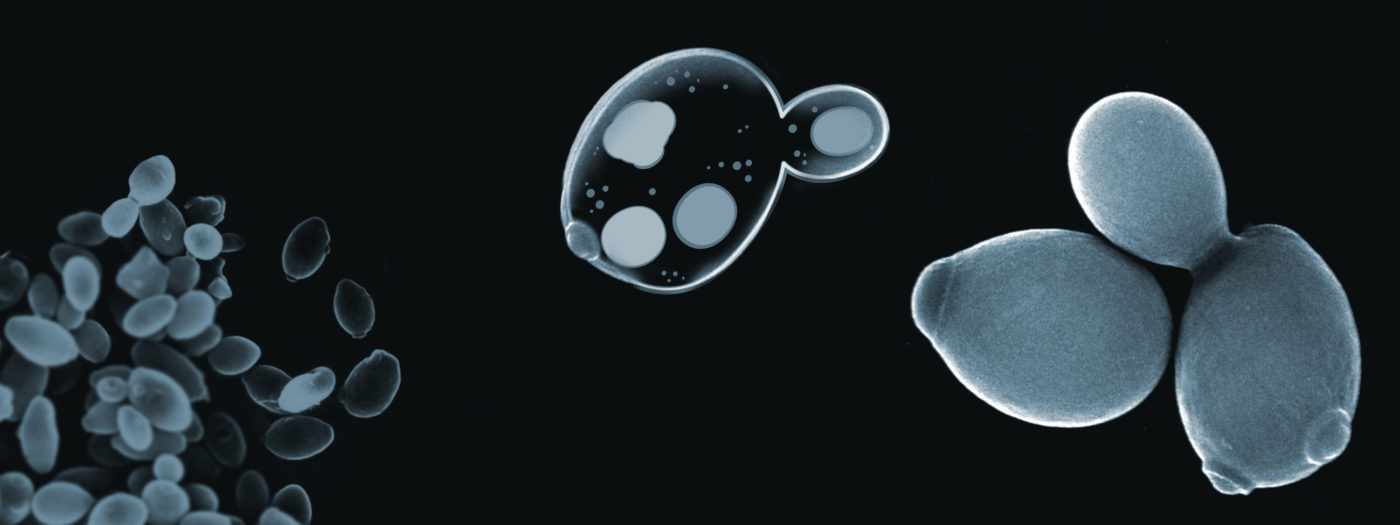
Yeast – a sensitive living organism
Baker’s yeast is a single-celled fungus (Saccharomyces cerevisiae) consisting of water, protein, carbohydrate, fat, minerals and B vitamins. Most of the protein is in the form of enzymes, and these enzymes are crucial for both the growth of the yeast and the rising of the dough.
From 10 milligrams to 150 tons – in a week
Yeast is dependent on carbohydrate and occurs naturally in flowers and fruits that contain sugar. Each yeast cell can bud 20-30 times during its life, on each occasion producing an identical new cell that can make the same number of new cells again. In favourable conditions, multiplication can be very fast, and a 10 milligram starter culture can grow to 150 tons in just a week.
Growth is controlled mainly by three factors: nutrients, oxygen and temperature. The nutrients that are added during the propagation process are carbohydrate, nitrogen, phosphorus, magnesium and vitamins. Lowering the temperature also lowers the yeast cells’ activity, which is why the finished fresh yeast needs to be kept refrigerated.
Different strains produce different types of yeast
Our products contain different strains of yeast with different characteristics. For example, our Bread Yeast has the best raising power in bread doughs because it readily takes up maltose from the flour, but performs less well in doughs containing large amounts of fat and sugar. Our Sweet Dough Yeast, on the other hand, has the best raising power in sweet doughs and is less quick to use maltose. Our Organic Yeast is produced using certified organic raw materials and has the best raising power in bread doughs. As well as baker’s yeast, we produce yeasts for the manufacture of products like beer, wine and animal feed.
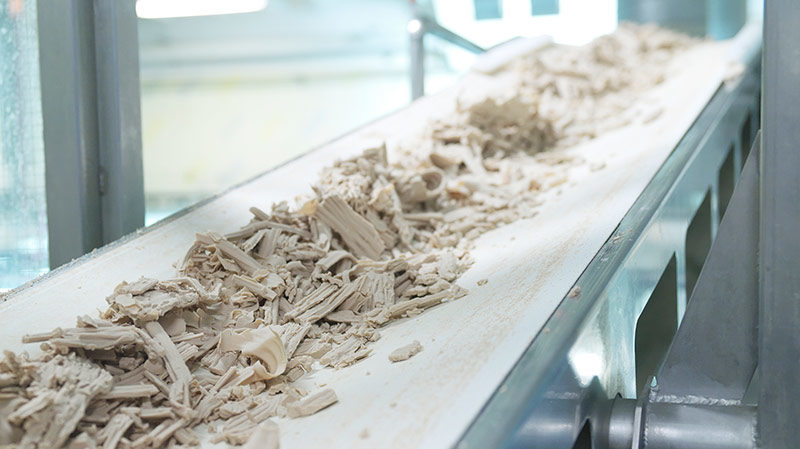
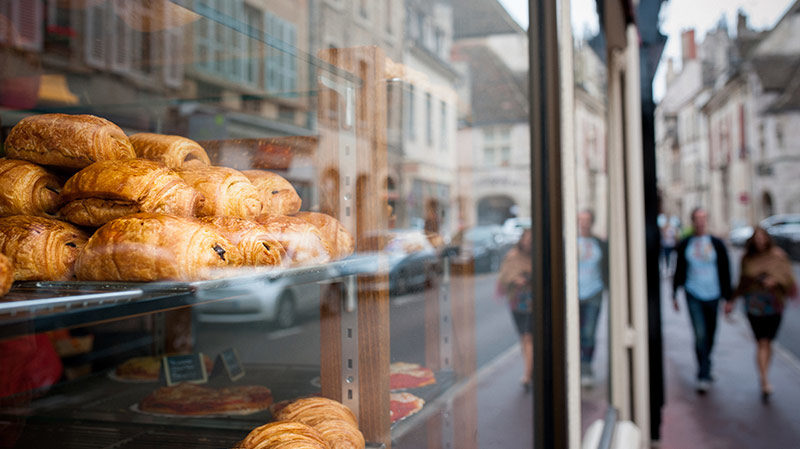
A living process
Yeast production is not a manufacturing process in the traditional sense but more a matter of propagation. Our role in the process is to give the yeast cells the precise conditions needed for optimum growth, and above all to ensure that the yeast has the characteristics needed for baking or winemaking.
The propagation process begins by placing a few milligrams of yeast cells in a test tube. We then wake up the yeast by adding nutrients. After a few hours, the cells will have multiplied to the point where they need more space and are transferred to a vat. As the cells continue to multiply, they are transferred to larger and larger vats. After a week, the starter culture will have grown to around 150 tons of yeast in which all the cells have identical characteristics. Each gram of fresh yeast contains 3 billion living cells.
When we stop adding nutrients and air, the yeast stops growing and can be separated off. The resulting cream is cooled to around 2°C and stored in refrigerated tanks. Immediately before packing and storage, water is removed to give the finished product the right consistency and dry matter content.
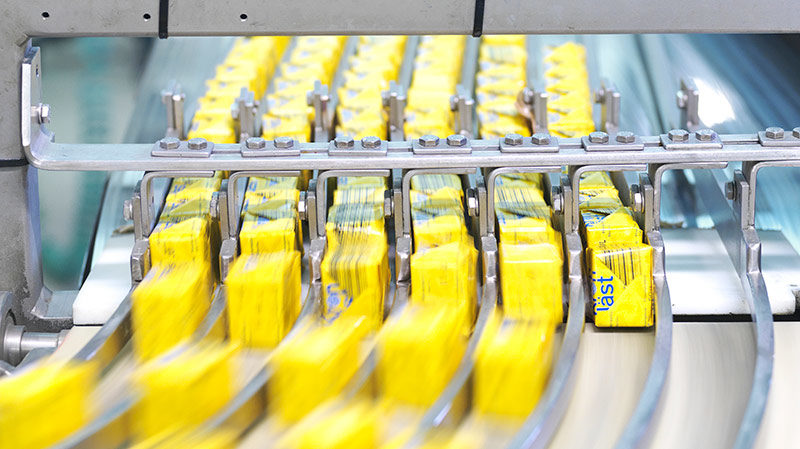
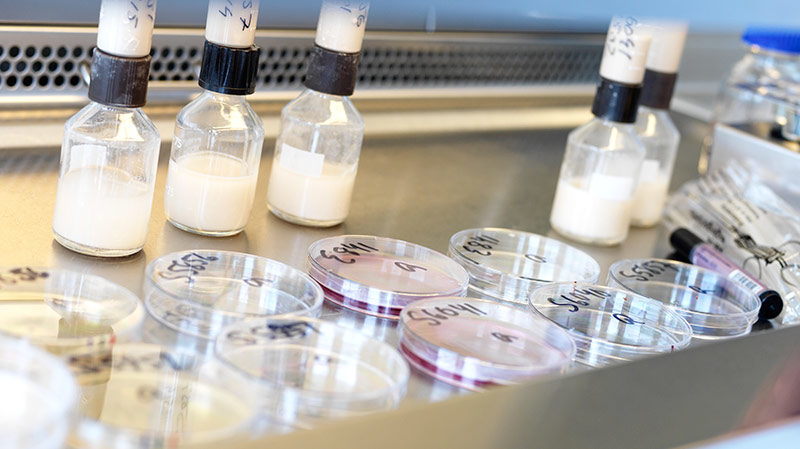
Yeast adds volume and flavour to bread
Baking bread is a way of making the starch and protein in grains more readily available to the digestive enzymes in the human body. This requires the flour to be heated with a liquid.
The bread-making process also includes a fermentation process which begins in the dough before the starch is heated and is completed during the actual baking of the bread. In this fermentation process, the yeast consumes sugars in the dough and produces carbon dioxide and alcohol. Enzymes in the flour turn some of the starch in the flour into a sugar called maltose whilst the dough is rising, so there is no need to add sugar to the dough to get it to rise. The carbon dioxide produced by the yeast fills the air pockets created during kneading and causes the dough to stretch and increase in volume.
The yeast also adds flavour and aroma to the bread through the formation of various aromatic compounds. Once in the oven, the yeast dies off, but the bread continues to rise. This is because the gases trapped in the dough expand as the temperature increases. It is these gas bubbles that give bread its light, porous texture. Ideally they should be small and evenly distributed through the loaf. The degree of porosity depends mainly on the quality of the flour and how well the dough was kneaded, but also on the recipe.
No yeast – No wine or beer
Without yeast, there would be no wine. Most wine around the world is produced with the help of yeasts carefully selected by winemakers. Working alongside the grape’s natural bacterial flora, these yeasts bring a degree of consistency of flavour between vintages. Saccharomyces cerevisiae, the species of yeast that winemakers use the most, occurs naturally on grapes along with many other microorganisms. The role it plays in winemaking is twofold: most importantly it turns sugar into alcohol, but it also enhances various subtle flavours.
Winemakers take great care to select the yeasts that bring out the finer qualities of different grape varieties. Choosing the right strain is very important for achieving a successful fermentation that results in the desired flavours. The yeast releases enzymes into the must as it ferments, and these unlock volatile – and hence aromatic – chemical compounds. The challenge for winemakers is to choose the strain of yeast that best achieves this for the type of wine they want to produce.
Yeast is also a key ingredient when brewing beer, turning the sugar in the wort into alcohol and adding a characteristic flavour. In most types of beer and wine, the yeast is filtered off once it has produced the desired amount of alcohol.
Brewers use two main species of yeast: Saccharomyces uvarum for bottom-fermenting beers such as lagers, and Saccharomyces cerevisiae for top-fermenting beers such as ales.
Q&A
For answers to some of the questions we are asked here at Jästbolaget, click here.